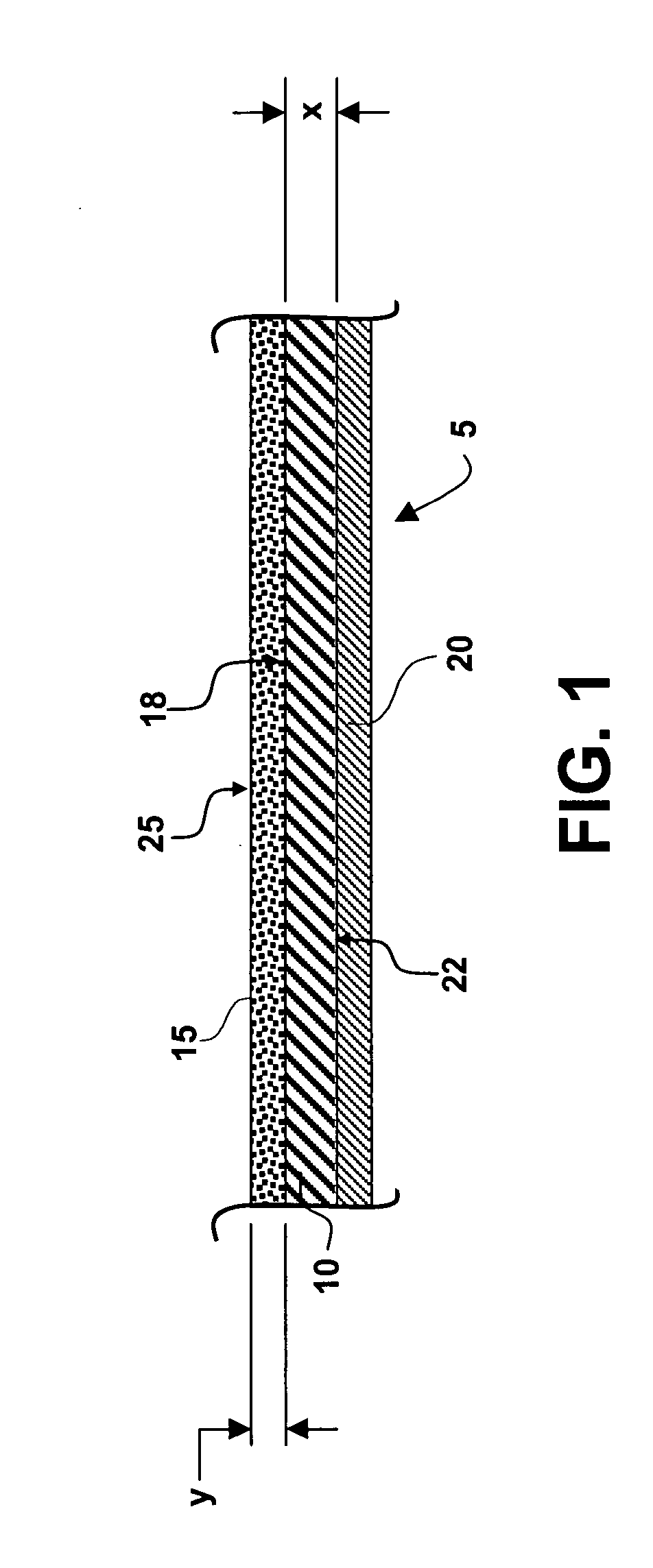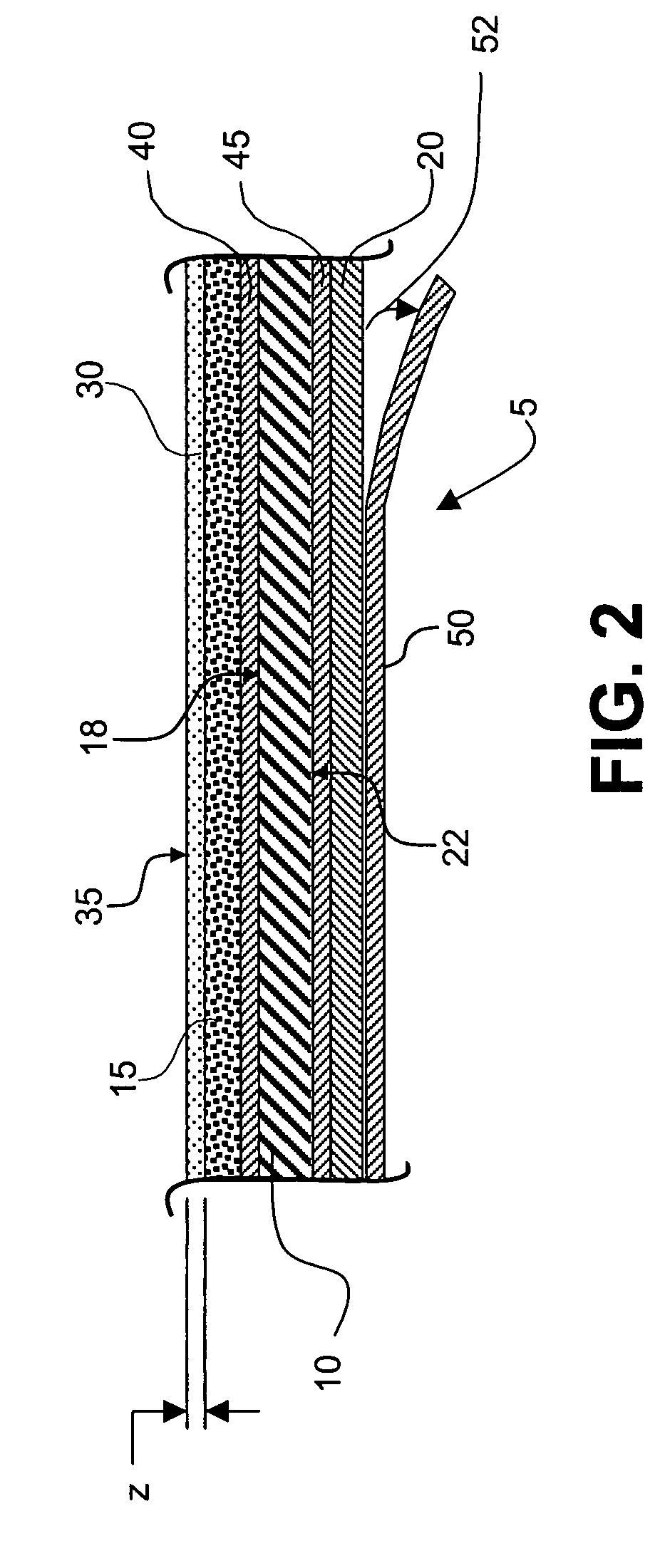Antimicrobial metal-ion sequestering web for application to a surface
a technology of antimicrobial metal sequestering and surface, which is applied in the direction of biocide, transportation and packaging, synthetic resin layered products, etc., can solve the problems of skin infection, affecting the taste of food or drink,
- Summary
- Abstract
- Description
- Claims
- Application Information
AI Technical Summary
Problems solved by technology
Method used
Image
Examples
Embodiment Construction
[0047] Referring to FIG. 1, there is illustrated a cross-sectional view of an antimicrobial multilayer medium 5, which in the embodiment illustrated, comprises a support layer 10 with an antimicrobial layer 15 coated on the top surface 18 of the support layer 10 with an adhesive layer 20 coated on the bottom surface 22 of the support layer 10. The support layer 10 can be a flexible substrate, which in the embodiment illustrated, has a thickness “x” of between 0.025 millimeters and 5.0 millimeters. In the embodiment illustrated, the thickness x is about 0.125 millimeters. It is, of course, to be understood that thickness of layer 10 may be varied as appropriate. The antimicrobial multilayer medium 5 may be made as a web (not shown) which is described later. Examples of supports useful for practice of the invention are resin-coated paper, paper, polyesters, or micro porous materials such as polyethylene polymer-containing material sold by PPG Industries, Inc., Pittsburgh, Pa. under th...
PUM
| Property | Measurement | Unit |
|---|---|---|
| Thickness | aaaaa | aaaaa |
| Thickness | aaaaa | aaaaa |
| Thickness | aaaaa | aaaaa |
Abstract
Description
Claims
Application Information
 Login to View More
Login to View More - R&D
- Intellectual Property
- Life Sciences
- Materials
- Tech Scout
- Unparalleled Data Quality
- Higher Quality Content
- 60% Fewer Hallucinations
Browse by: Latest US Patents, China's latest patents, Technical Efficacy Thesaurus, Application Domain, Technology Topic, Popular Technical Reports.
© 2025 PatSnap. All rights reserved.Legal|Privacy policy|Modern Slavery Act Transparency Statement|Sitemap|About US| Contact US: help@patsnap.com



